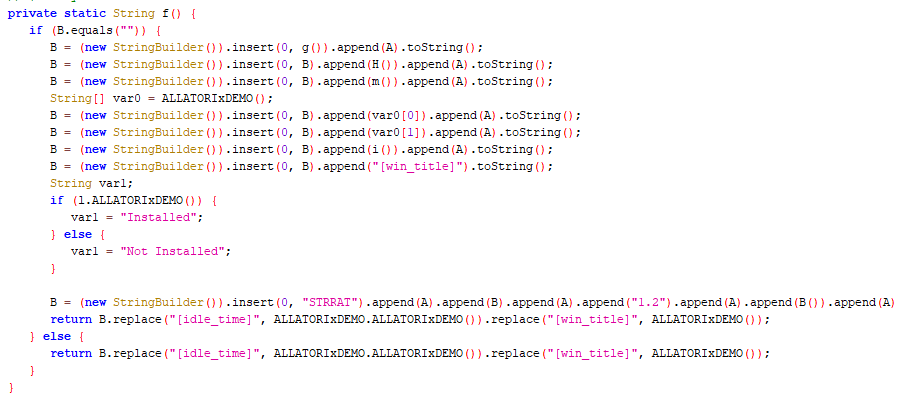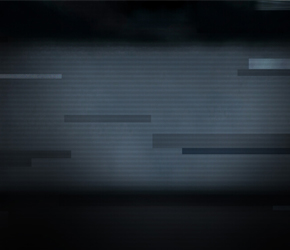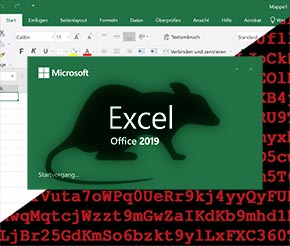Java is not commonly used for malware anymore and its runtime environment is not installed on as many systems as it was in the past. The more it seems surprising when new Java based malware families arise.
I am an active member of the forum MalwareTips.com. A member of this forum, upnorth, shared a sample[2] to be used for testing Antivirus products. This sample[2] caught my attention. It was a Java archive but described as WSHRat. I expected to see either a dropper for a known WSH based RAT or another Adwind variant. I was wrong. This sample[2] is a new breed of Java RAT. One that is prepared to not rely on a preinstalled Java Runtime Environment (JRE).
Infection chain overview
The following sections will describe the infection chain in detail. Here is an overview involving initial infection, intermediate files, unpacking layers and hardcoded downloads by the payload. The numbering of files in the image corresponds to numbers in the IOC listing at the bottom of the article.

Infection chain 1: Spam email with malicious Jar attachment
The infection starts with a rather ordinary spam email[1] that has a malicious attachment named NEW ORDER.jar[2].
I found this email via VirusTotal graphs which shows a relationship to our Jar file. It is not clear if the uploader of the email redacted the email body or if the threat actors didn't want to take their time to add any content. It should be noted that Outlook prevents access to email attachments with .jar extension. In this case I applied a registry hack to have it shown anways.

The NEW ORDER.jar[2] is a simple dropper. It retrieves a VBScript[3] from the resources, saves the script as bqhoonmpho.vbs[3] to the home directory of the user and executes it using wscript.exe.

Infection chain 2: VBScript downloads and installs Java for the RAT
The VBScript[3] has a large string in it and uses PowerShell to replace characters in this string. The resulting base64 string is subsequently decoded and executed by PowerShell.
The unpacked layer is again a VBScript. This script will copy the packed version of itself to %APPDATA%\edeKbMYRtr.vbs. It will also download a Java Runtime Environment (see picture below) and add it to the registry. That way it may be prepared to infect systems that don't have Java installed. It even has a built-in check that runs javaw.exe with the -version parameter to verify that the JRE has the version 1.6, 1.7 or 1.8.
The email attachment already requires a Java Runtime Environment (JRE) on the system, which means the current infection chain misses the opportunity to work regardless of the JRE installation. If this VBScript is ever shipped with a different initial infection step, it may enable the RAT to work on more systems.

The VBScript continues to write the actual payload to %APPDATA%\ntfsmgr.jar[4] and add a RUN key named ntfsmgr to the registry that will autorun the dropped Jar[4] . The RUN key will use the newly installed JRE if no JRE was present before.
Infection chain 3: Initial payload analysis
What striked me first about the Jar payload is the package name strpayload and one of the dependencies listed in the MANIFEST.MF named system-hook-3.5.jar.
A quick search for the library turns up a GitHub repository by user kristian stating that "Java (low-level) System Hook provides a very light-weight global keyboard and mouse listener for Java". We can already estimate that the malware may use it to log keystrokes.
We see immediately that the Jar file is obfuscated by Allatori. Upon opening the Main.class we find a URL reference to hxxp://jbfrost.live/strigoi/lib.zip
The URL provides a ZIP bundle of all the dependencies listed in the MANIFEST.MF. The malware will probably not work correctly if this site is down.
Due to the use of Allatori most of the strings in the Jar file are encrypted with AES. Method arguments and local variables mostly use the name 'a' which creates non-working decompiled Java code. Although Java bytecode saves variable names, it uses indices to reference them. So using the same name several times doesn't cause an error in the bytecode but causes one in decompiled code because it's not clear anymore which variable was referenced by 'a'.
An example is seen in the image below. The left side shows decompiled Java code with both arguments named 'a'. The right side shows the same method in Java bytecode. The first argument 'arg0' is later referenced by it's index via 'adload0'.

Method f in class strpayload.r builds a string with information about the infected system. Among others it shows name and supposedly version number of the malware, which is "STRRAT 1.2".

Deobfuscating STRRAT and its configuration
To combat string encryption by Allatori I used 'Deobfuscator' by Github user 'Java Deobfuscator'. Deobfuscator has a variety of options to choose from. I applied Allatori.StringEncryptionTransformer which successfully decrypted the strings.
In a resource of the malware I found an encrypted configuration file. The malware code shows it is encrypted with AES using the password "strgoi". I made a quick and dirty decrypter by copying the decompiled code for the decryption method and repairing it, so the double names are not causing compile errors. Then I added a few lines to read and write the config. My configuration decryption code is listed below.
import java.io.File;
import java.nio.ByteBuffer;
import java.nio.file.Files;
import java.nio.file.Path;
import java.nio.file.Paths;
import javax.crypto.Cipher;
import javax.crypto.SecretKey;
import javax.crypto.SecretKeyFactory;
import javax.crypto.spec.IvParameterSpec;
import javax.crypto.spec.PBEKeySpec;
import javax.crypto.spec.SecretKeySpec;
public class ConfigDecrypter {
public static void main(String[] args) throws Exception {
File config = new File("config.txt");
byte[] configBytes = Files.readAllBytes(config.toPath());
byte[] decryptedConfig = decryptConfig("strigoi", configBytes);
Path output = Paths.get("config_decrypted.txt");
Files.write(output, decryptedConfig);
}
public static byte[] decryptConfig(String password, byte[] data) throws Exception {
int var2;
ByteBuffer a;
if ((var2 = (a = ByteBuffer.wrap(data)).getInt()) >= 12 && var2 <= 16) {
byte[] var6 = new byte[var2];
a.get(var6);
SecretKey var3 = createKey(password, var6);
ByteBuffer var10001 = a;
byte[] var8 = new byte[a.remaining()];
data = var8;
var10001.get(var8);
Cipher var4 = Cipher.getInstance("AES/CBC/PKCS5PADDING");
IvParameterSpec var7 = new IvParameterSpec(var6);
var4.init(2, var3, var7);
return var4.doFinal(data);
} else {
throw new IllegalArgumentException("Nonce size is incorrect. Make sure that the incoming data is an AES encrypted file.");
}
}
public static SecretKey createKey(String password, byte[] data) throws Exception {
PBEKeySpec a = new PBEKeySpec(password.toCharArray(), data, 65536, 128);
byte[] d = SecretKeyFactory.getInstance("PBKDF2WithHmacSHA1").generateSecret(a).getEncoded();
return new SecretKeySpec(d, "AES");
}
}
The resulting plain text configuration of our sample is in the picture below. It reveals, among others, the C2C server.

STRRAT features and command listing
The RAT has a focus on stealing credentials of browsers and email clients, and passwords via keylogging. It supports the following browsers and email clients: Firefox, Internet Explorer, Chrome, Foxmail, Outlook, Thunderbird.
STRRAT also allows installation of RDPWrap. The file is downloaded from hxxp://wshsoft.company/multrdp(.)jpg. RDWrap is an open source tool that enables Remote Desktop Host support on Windows.
There is also a ransomware module. It is described in the section below.
The following table shows a list of all available commands.
| Command | Description |
|---|---|
| reboot | Reboots the infected system |
| shutdown | Shuts down the infected system |
| uninstall | Removes persistence of the RAT by deleting the scheduled task and autorun entries in the registry. |
| disconnect | Closes the connection |
| down-n-exec | Downloads a file from a given URL and executes it |
| update | Disconnects, then executes a given file in the start menu. |
| up-n-exec | Executes a file given by name. Chooses the appropriate runtime environment for files with .jar, .js, .vbs or .wsf extension. Every other file is executed with cmd.exe /c. |
| remote-cmd | Executes commands with cmd.exe |
| power-shell | Executes commands with powershell.exe |
| file-manager | Provides commands to navigate, upload, download, delete and open files |
| keylogger | Logs keystrokes and sends them immediately |
| o-keylogger | Starts offline keylogger which saves logged keystrokes to a text file on the infected system |
| processes | Create a process listing |
| startup-list | Uses WMI to compile a list of autorun entries |
| remote-screen | Remote control the infected computer |
| rev-proxy | Reverse proxy |
| hrdp-new | Downloads and installs HRDPInst.exe[5] which stands for "Hidden RDP Installer". Download URL hxxp://wshsoft.company/multrdp(.)jpg |
| hrdp-res | Same as hrdp-new, but takes an argument containing a user name. The session for this user is logged off. |
| chrome-pass | Extracts Chrome credentials |
| foxmail-pass | Extracts Foxmail credentials |
| outlook-pass | Extracts Outlook credentials |
| fox-pass | Extracts Firefox credentials |
| tb-pass | Extracts Thunderbird credentials |
| ie-pass | Extracts Internet Explorer credentials |
| all-pass | Extracts all credentials |
| chk-priv | Returns whether it is run as administrator or user |
| req-priv | Run as administrator |
| rw-encrypt | Appends ".crimson" extension to files on the system |
| rw-decrypt | Removes ".crimson" extension from files on the system |
| show-msg | Display a message with notepad.exe |
Rudimentary ransomware module appends ".crimson"
The commands used for the ransomware component are rw-encrypt for "encrypting" files, rw-decrypt for "decrypting" files and show-msg for displaying the ransom note.
Ransomware "encrytion" and "decryption" methods are in the class strpayload.l. The "encryption" method is seen in the screenshot below.

However, the so called "encryption" only renames files by appending the .crimson extension. This might still work for extortion because such files cannot be opened anymore by double-clicking. Windows associates the correct program to open files via their extension. If the extension is removed, the files can be opened as usual.
There is no ransom note template in the client of the RAT. The attacker can display anything they like with the show-msg command. It is possible that the server provides ransom note templates.
STRRAT attempts to infect German customers
The version number "1.2" and the fact that this malware doesn't seem to be described before indicates that this RAT is a fairly new player in the wild. The infection chain is not well thought out as it makes void certain features of the intermediate layers in the chain. I also haven't seen any ransomware reports involving this RAT. Maybe the, for now, badly implemented ransomware module is just the first version of it.
Our telemetry shows infection attempts on German customers. While we hope not to see any more of them, it's most likely not the end of it.
It should be noted that the number of potentially vulnerable systems is limited by the current infection chain.
- Even though it is Java based, the RAT only works on Windows
- Even though preparations have been made to overcome this, the current chain still needs a pre-installed JRE
- Outlook blocks the email attachment
I expect that the second and third limitation may be removed soon because they are already prepared or easily implemented. The limitation on Windows however would require too many code modifications.
Indicators of Compromise
| Description | Filename | SHA256 |
|---|---|---|
| [1] Spam email | 1124150.eml | e6b0a56662d1f0544257c63e63b2f85ad7215f0df3a7f5a689dee66f27e24db7 |
| [2] Java based VBS dropper | NEW ORDER.jar | 0f0e25e859bc6f21447ed196d557eb6cdba9737dd3de22a5183a505da0126302 |
| [3] VBScript based JAR dropper | bqhoonmpho.vbs edeKbMYRtr.vbs | b76e2eea653b480c8a559215aa08806fad4c83c60f9a5996e89d51709212ee29 |
| [4] Java RAT | ntfsmgr.jar | 7c24d99685623b604aa4b2686e9c1b843a4243eb1b0b7b096d73bcae3d8d5a79 |
| [5] RDPWrap | multrdp.jpg | ac92d4c6397eb4451095949ac485ef4ec38501d7bb6f475419529ae67e297753 |






